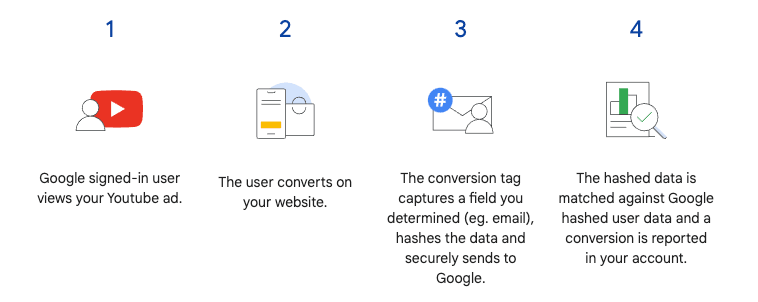Running a successful Google Ads campaign requires careful planning, implementation, and optimisation. With a budget ranging from £1,500 to £5,000 per month, it is essential to follow best practices to maximise the conversion volume within your account. In this article, we will highlight the top strategies to help you achieve your goals while ensuring effective spend management.
1. Define All Primary & Secondary Conversions
To accurately track your campaign’s performance, it’s crucial to define both primary and secondary conversions that align with your business objectives. Primary conversions are the ones used for bidding to help achieve your campaign goals, while secondary conversions are for observation purposes only. For example, if you’re running an eCommerce business, direct purchases via PPC ads would be considered primary conversions, while newsletter signups would be secondary conversions. Separating these conversions allows you to focus your optimisation efforts effectively.
2. Use the Google Ads Tag for Primary Conversions
When it comes to conversion tracking, many marketers make the mistake of solely relying on Google Analytics events. However, using the Google Ads tag is essential to track various types of conversions accurately. By using the Google Ads tag, you can track cross-device conversions, view-through conversions, and engaged-view conversions, which are impossible to measure with imported events from Google Analytics
3. Use Enhanced Conversions
Google Ads introduced Enhanced Conversions as a response to conversion tracking preventions, such as iOS14 updates. This feature converts first-party personal information from your website visitors into hashed text before sending it to your Google Ads account. This means that even if a user leaves your site and returns at a later date to make a purchase, the conversion can still be attributed to the original ad they clicked on. Setting up Enhanced Conversions correctly can lead to a significant increase in conversions, especially for video campaigns.

Accurate Conversions pave the way to positive ROI.
4. Use Data Driven Attribution
Data-driven attribution is a powerful tool that helps you understand the impact of your various campaigns on conversions. With this feature enabled, conversions are attributed across different campaigns based on their contribution to the conversion journey. While there may be cases where last-click or first-click attribution models make sense, data-driven attribution is recommended in most cases. It provides more accurate insights into the effectiveness of your campaigns and allows for more informed bidding and optimisation decisions.
5. Use Offline Conversion Tracking
Importing offline conversions is a valuable technique for enhancing your conversion tracking. It allows you to track and attribute conversions that happen offline, such as phone calls or in-person purchases. Offline conversion tracking can also help you overwrite data, add more conversions,add conversion values for lead generation, and improve overall tracking accuracy. One useful tool for offline conversion tracking is ProfitMetrics.io, which combines Google technology with offline conversion tracking methods. It offers a backup tracking method in case a conversion pixel cannot be fired due to ad blockers or other technical issues. By using offline conversion tracking, you can capture conversions that would otherwise be missed, ensuring a more comprehensive view of your campaign’s performance.
6. Regularly Review Your Setup
Conversion tracking is not a one-time setup process. It requires regular monitoring and review to ensure everything is working correctly. Websites undergo changes over time, and a simple code alteration can break your tracking. Regularly auditing your conversion tracking setup helps identify and fix any issues that may arise. Failure to conduct regular audits can result in inaccurate data and ineffective optimisation. Make it a priority to check your conversion tracking setup on a consistent basis to maintain accurate and reliable data for your campaigns.
7. Verify Authenticity of Conversions
Unfortunately, ad fraud and bot activity are prevalent challenges in digital advertising. To ensure your conversions are based on genuine human data, it’s crucial to verify their authenticity. Implement measures to prevent fake submissions and bot clicks, such as using CAPTCHA, monitoring traffic sources, and regularly analysing conversion patterns. By taking steps to verify the authenticity of your conversions, you can trust that your data is reliable and make informed decisions based on accurate information.
Running a Google Ads campaign with a budget between £1,500 and £5,000 per month requires adherence to best practices for optimal results. By defining primary and secondary conversions, using the Google Ads tag, implementing enhanced conversions, leveraging data-driven attribution, utilising offline conversion tracking, regularly reviewing your setup, and verifying the authenticity of conversions, you can maximise conversion volume and make the most of your advertising budget. With careful planning, monitoring, and optimisation, you can achieve success in your Google Ads campaigns and drive meaningful results for your business.


